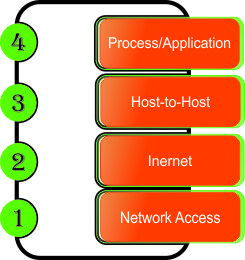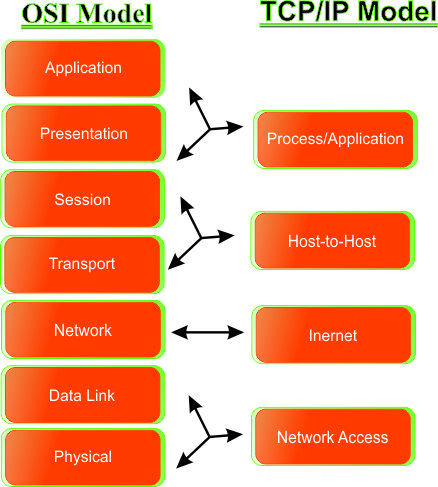The TCP/IP protocol suite is the most common network communication model in use today. The TCP/IP reference model differs a bit from the OSI model, as it has only four layers instead of seven.
The TCP/IP reference model was developed after the TCP/IP protocol was already in common use. It differs from the OSI model by subscribing a less rigid, although still hierarchical, model. For this reason, the OSI model is sometimes better for understanding and reasoning about networking concerns, but the TCP/IP model reflects a more realistic view of how networking is commonly implemented today.
TCP/IP Model Layers
- 4. Process/Application
- 3. Host-to-Host
- 2. Internet
- 1. Network Access

The TCP/IP model doesn't match up exactly with the layers in the OSI model. That's OK. In both models, the same functions are performed; they are just divided differently as you can see in the diagram below.

Network Access Layer
On this layer, physical connections and data framing happen. Sending an Ethernet or Wi-Fi packet are examples of layer 1 concerns.
Internet Layer
This layer deals with the concerns of addressing packets and routing them over multiple interconnection networks. It's at this layer that an IP address is defined.
Host-to-Host Layer
The host-to-host layer provides two protocols, TCP and UDP, which we will discuss later in this tutorial. These protocols address concerns such as data order, data segmentation, network congestion, and error correction.
Process/Application Layer
The process/application layer is where protocols such as HTTP, SMTP, and FTP are implemented. It is no different with the Presentation and Application layer in the OSI Model.